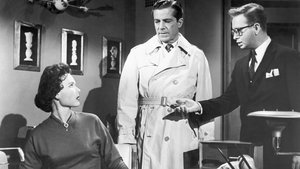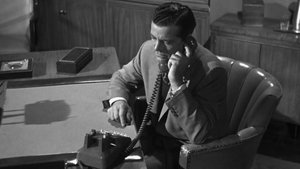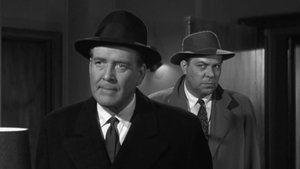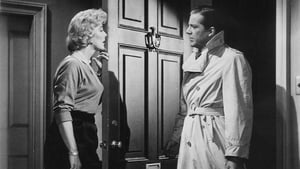Contact: info@alwanfilm.com
Video Sources 0 Views

The Fearmakers 1958 Colorized
Synopsis
Review: The Fearmakers 1958 Colorized – Unraveling the Shadows of Conspiracy

Introduction
Step into the enigmatic world of The Fearmakers 1958, a compelling thriller that has recently emerged in an early colored version, adding a new layer of intrigue to its narrative. In this review, we dissect the significance of this colorized release, delving into its impact on the cinematic landscape and its enduring legacy in the realm of classic films.
Check The Full Colorized Movies List
Check Our Colorized Movies Trailer Channel
Understanding The Fearmakers 1958 Colorized: Director, Cast, and Genre
Directed by Jacques Tourneur, The Fearmakers 1958 epitomizes the noir genre with its brooding atmosphere and intricate plot. The film features an ensemble cast led by Dana Andrews, who delivers a captivating performance as a journalist caught in a web of political intrigue. Tourneur’s masterful direction imbues the film with a sense of tension and suspense, keeping audiences on the edge of their seats from start to finish.
Exploring the World of The Fearmakers 1958 Colorized: Plot and Characters
Set against the backdrop of Cold War paranoia, The Fearmakers 1958 follows journalist Alan Eaton as he investigates a shadowy organization suspected of manipulating public opinion for political gain. As Eaton delves deeper into the conspiracy, he uncovers a web of lies and deception that threatens to consume him. Along the way, he encounters a cast of characters shrouded in mystery, each with their own agenda and motivations.
The Art of Film Colorization
Film colorization is a process by which black and white films are digitally or manually altered to add color. While controversial among purists, colorization has become increasingly prevalent in recent years, offering audiences a new way to experience classic films. In the case of The Fearmakers 1958, the decision to release an early colored version adds a new dimension to the film’s visual aesthetic, enhancing its impact on modern audiences.
Early Colored Films: A Brief History
The practice of colorizing black and white films dates back to the early 20th century, with hand-painted techniques used to add color to silent movies. However, it wasn’t until the advent of digital technology in the late 20th century that colorization became more widespread. Despite its controversial nature, colorization has continued to evolve, with new techniques and technologies constantly reshaping the way we experience classic cinema.
The Fearmakers 1958 and Its Early Colored Version
The decision to release The Fearmakers 1958 in a colorized format is a bold one, offering audiences a fresh perspective on this classic thriller. While purists may argue that the film’s original black and white aesthetic is integral to its artistic vision, others may appreciate the opportunity to see the story brought to life in vibrant color. Ultimately, the choice to colorize The Fearmakers 1958 adds a new layer of visual interest to the film, inviting viewers to experience it in a new light.
The Debate Over Film Colorization
The debate over film colorization is a contentious one, with proponents arguing that it breathes new life into old classics, while detractors argue that it undermines the integrity of the original work. While some filmmakers have embraced colorization as a way to introduce their work to new audiences, others have vehemently opposed it, fearing that it will overshadow the original intent of their films. In the case of The Fearmakers 1958, the decision to release an early colored version is sure to spark further debate among film enthusiasts.
Examining The Fearmakers 1958 as an Early Colored Film
As we examine The Fearmakers 1958 in its early colored form, it becomes clear that the addition of color enhances the film’s visual appeal without detracting from its noir atmosphere. The vibrant hues bring new life to the film’s iconic imagery, from the smoky back alleys of the city to the dimly lit interiors of its shadowy conspiracies. While purists may argue that the film’s original black and white aesthetic is sacrosanct, others may appreciate the opportunity to see it in a new light.
Influence and Legacy: The Fearmakers 1958 Colorized’s Impact on Cinema
The Fearmakers 1958 has left an indelible mark on the cinematic landscape, influencing countless filmmakers and spawning a new wave of conspiracy thrillers in its wake. From its gripping storyline to its unforgettable characters, the film continues to captivate audiences decades after its initial release. With the addition of an early colored version, The Fearmakers 1958 is poised to introduce a new generation of viewers to its timeless tale of intrigue and deception.
Director’s Cinematic Legacy: Beyond The Fearmakers 1958 Colorized
Jacques Tourneur’s legacy extends far beyond The Fearmakers 1958, with the director leaving an indelible mark on the world of cinema with his masterful storytelling and atmospheric visuals. From his early work in the horror genre to his later forays into film noir, Tourneur’s influence can be seen in the work of filmmakers around the world. The Fearmakers 1958 stands as a testament to Tourneur’s talent and vision, cementing his status as one of the greats of classic cinema.
Themes Explored in The Fearmakers 1958 Colorized
At its core, The Fearmakers 1958 is a film about power, corruption, and the lengths to which people will go to protect their interests. Through its gripping storyline and morally ambiguous characters, the film explores themes of loyalty, betrayal, and the thin line between right and wrong. As journalist Alan Eaton delves deeper into the conspiracy at the heart of the film, he is forced to confront his own beliefs and values, leading to a dramatic climax that will leave audiences on the edge of their seats.
Reception and Controversy Surrounding The Fearmakers 1958 Colorized
The Fearmakers 1958 received critical acclaim upon its initial release, with praise for its gripping storyline, atmospheric visuals, and standout performances. However, the decision to release an early colored version of the film has sparked controversy among film enthusiasts, with some arguing that it detracts from the original aesthetic. Despite the debate, The Fearmakers 1958 remains a classic of the thriller genre, beloved by audiences around the world.
Where to Watch The Fearmakers 1958 Colorized Online
For those eager to experience The Fearmakers 1958 in all its early colored glory, the film is available for streaming on various platforms, including Amazon Prime Video, iTunes, and Google Play Movies. Whether you prefer to watch it in its original black and white format or the newly colorized version, The Fearmakers 1958 is sure to leave you on the edge of your seat from start to finish.
FAQs About The Fearmakers 1958 Colorized
Q: Is The Fearmakers 1958 based on a true story?
A: While The Fearmakers 1958 is not based on a specific true story, it draws inspiration from real-life events and conspiracy theories prevalent during the Cold War era.
Q: Who are the main actors in The Fearmakers 1958?
A: The Fearmakers 1958 stars Dana Andrews as journalist Alan Eaton, alongside a talented ensemble cast including Marilee Earle, Dick Foran, and Paul Birch.
Q: What is the significance of the film’s early colored version?
A: The early colored version of The Fearmakers 1958 offers audiences a fresh perspective on this classic thriller, enhancing its visual appeal while staying true to its noir roots.
Conclusion
As we conclude our journey through the shadowy world of The Fearmakers 1958, it’s clear that the film remains as captivating and relevant today as it was upon its initial release. Whether viewed in its original black and white format or the newly colorized version, The Fearmakers 1958 stands as a testament to the enduring power of classic cinema. So, grab your popcorn, dim the lights, and prepare to be transported to a world of intrigue, deception, and suspense unlike any other.















